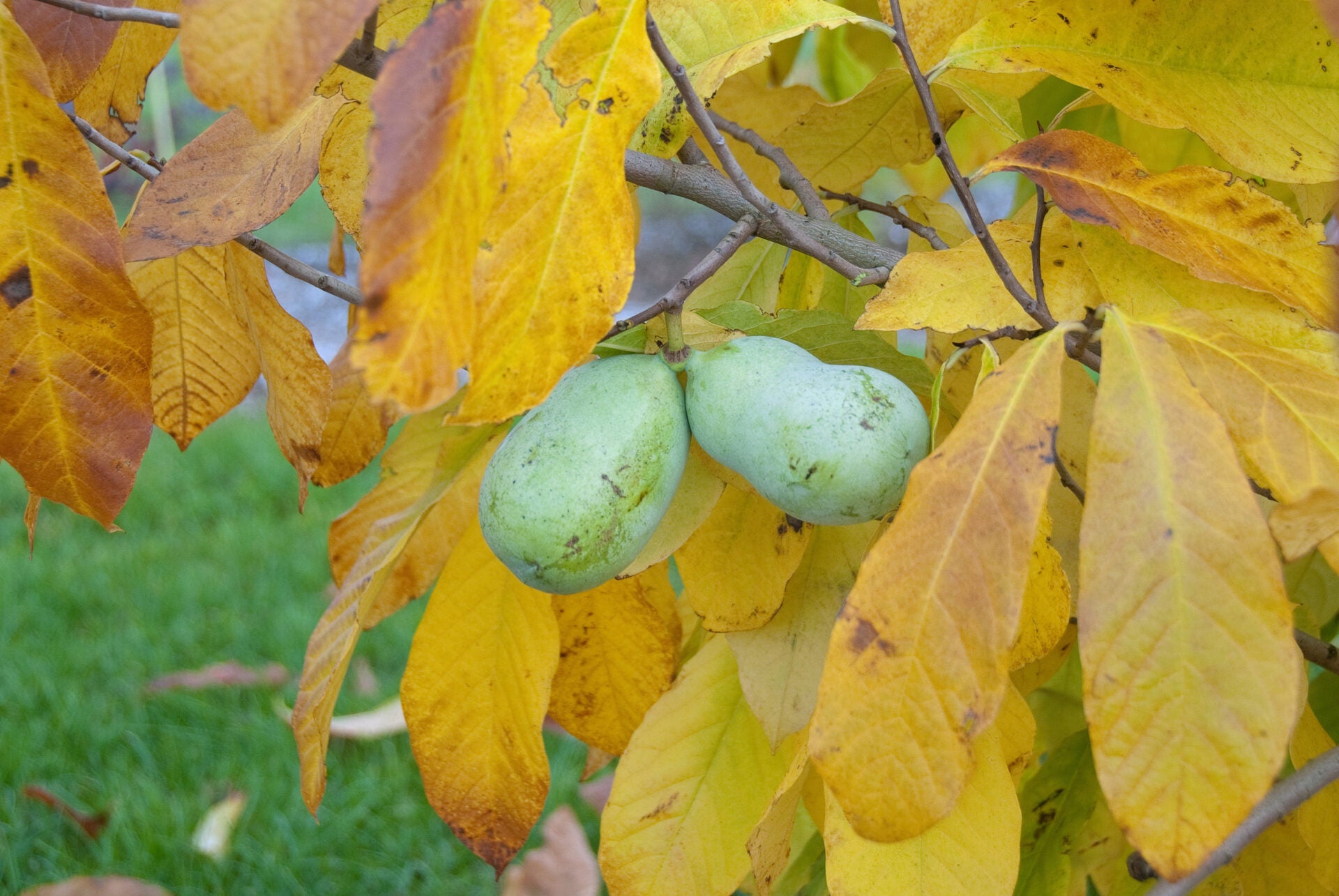It’s pawpaw hunting season – here’s how and where to find the ‘Indiana banana’
(MIRROR INDY) — On a walk in the woods, you could easily hike right past a semi-tropical oddity and the largest native fruit in Indiana – and never know what you missed.
Animals like possums, raccoons, squirrels, and coyotes – and many human foragers – are already in on the secret of the pawpaw. They know just where to find the hyper-seasonal, not-shelf-stable orangey-yellow pulp, which comes in a squat, half-banana-like green vessel that falls to the ground when ripe. They get their fill of the fruit, too, when the time is right – like now.
“They’re not particularly juicy,” said Greg Monzel, president of the Indiana Native Plant Society’s central chapter and co-founder, with his wife, of Persimmon Herb School. “And they’re fatty, kind of like an avocado.”
But before it lands usually sometime around late August or September on the forest floor (or along the edge of the woods or in someone’s yard) the fruit of the pawpaw – scientific name: asimina triloba – hangs alone or in clusters beneath frond-like leaves that spring off the thin-trunked, shrub-like tree.

“They can be kind of a hard tree to find,” says Jacob Roos, forestry director at the Indiana Department of Natural Resources. “They do prefer more light-shaded areas. If you see them growing out in the open in full sun, they’re more likely intentionally planted there. So you’ll most likely find them in shaded areas and they’re an understory tree.”
Pawpaw grow, often in patches with newer trees sprouting from the roots of older trees, underneath much bigger, taller Hoosier hardwoods like hickories and Sycamores.
“I typically find pawpaw growing best in creek and smaller river bottoms, where we don’t have real extensive flooding, but we’ve got good deep soils with plenty of moisture available,” said Lenny Farlee, Purdue Extension forester.
Not convinced pawpaws are worth the hype or trouble?
Alexis Nikole, the “Black Forager” of social media and late-night fame, shouts out pawpaw season and shares tips on identifying the tree and finding the fruit.
- You can break the fruit in half (its skin splits easily) and eat the pulp, spitting out what is akin to watermelon seeds on steroids. (Don’t eat the seeds or skin, which contain toxins.)
- You can use pulp to make everything from ice cream to pawpaw pancakes, as the Ohio-based Nikole does, declaring the latter superior to banana pancakes, with Jack Johnson’s hit by the same name (“Banana Pancakes,” not pawpaw pancakes, though maybe that’s coming) playing in the background.
- You can load up on the fruit at a pawpaw festival – just be careful buying in bulk because it will go bad quickly, save for freezing the pulp; or get lucky and sleuth it out at a farmer’s market.
At the Indiana Native Plant Society’s plant sale at Holliday Park on a recent Saturday, Nolan Taylor, who lives in Lawrence, was eyeing pawpaw saplings for his yard. He said he has been to a pawpaw festival in Ohio and likes the look of the shrub-like tree. As for the texture and taste of the fruit, he described them as “creamy” and “mango-ish, banana-ish, cantaloupe-ish.”
But the best way to obtain and enjoy the fruit, according to local forestry and foraging experts, is to find your own in a forest nearby and eat it on the spot.
That’s what Carrie Vrabel, a wild edible plant researcher and educator who created the Facebook group Wild Edible Indiana, does. Plucking it from a tree when it’s soft to the touch – the sign it’s ripe since the skin typically remains green – Vrabel uses her fingernail to break the fruit’s skin so she can bite into it.
“I just eat the pulp and I spit the seeds out … and I like to do that standing right under the pawpaw tree outside in the woods or wherever I am,” she says. “I think that’s the absolute best way to experience the full flavor.”

